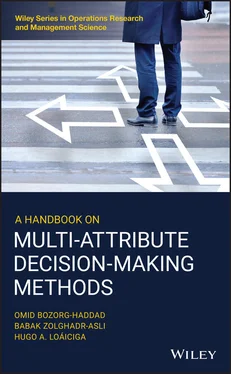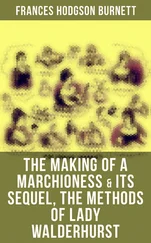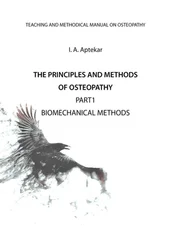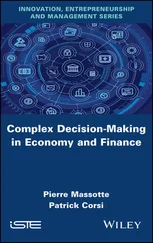February 14, 2021
Iran and USA
Omid Bozorg‐Haddad
Babak Zolghadr‐Asli
Hugo A. Loáiciga
1 An Overview of the Art of Decision‐making
1.1 Introduction
What motivates one to make a decision ? Finding the precise reason behind these motivations might not be as easy as it might seem. Nevertheless, given that these choices are shaping the world around us, it would not be an exaggeration to claim that the answer to the aforementioned question may facilitate understanding the workings of many world phenomena. Just for a moment consider the possibility of knowing the motivations prompting person to make decisions. If that were achieved, predicting humans’ behavior from the simple every‐day activity to the most sophisticated social, economic, and political contexts would be possible.
Now let us change the scope of the question; how can one make a good choice ? This time we may be more successful in finding a more proper answer. Let us take a moment to consider the description of the act of decision‐making. The Oxford dictionary defines decision‐making as “ the process of deciding about something important, especially in a group of people or in an organization .” From a psychological point of view, however, decision‐making is regarded as the cognitive process resulting in the selection of a belief or a course of action among several alternative possibilities. Each decision‐making process produces a final choice, which may or may not prompt action (Tzeng and Huang 2011). In other words, the decision‐making merely refers to the act choosing among a set of solutions, rather than the procedural requirements of executing the selected set of alternatives.
The decision‐making process is founded on a four‐stage analytical procedure (Vroom and Jago 1974; Bell et al. 1988; Weber and Coskunoglu 1990; Kleindorfer et al. 1993). The first stage of the decision‐making process is better known as descriptive analytics or positive analytics, which is concerned with describing observed behaviors of the stakeholders who are involved in the decision‐making process, mainly by looking at the their past performance and understanding such behavior either by mining historical data sets, and/or looking for the behavioral and social, psychological, and even neurology reasoning motivations that can best describe the course of actions made by the stockholders of the decision‐making problem (Tzeng and Huang 2011; Santos and Rosati 2015). Descriptive analysis is outside the scope of this book in spite of its psychological nature being pertinent to decision‐making process.
The predictive analytic stage concerns the prediction of what is likely to occur given a set of circumstances, which takes place after discerning the motivational patterns behind decision‐making problems through descriptive analytical techniques. The application of predictive analysis is limited to the decision‐making under uncertainty and, admittedly, not all decision‐making problems require such approach. Nevertheless, if necessary, the historical data sets may be reviewed during this second stage to determine the probability of an event or the likelihood of a situation’s occurrence (Bell et al. 1988; Kleindorfer et al. 1993). Exploring this phase of the decision‐making process is left to readers given the scope and aims of this book.
The third stage of the decision‐making process is the normative analysis. The term “normative” generally refers to relating an item to an evaluative standard through assessing and making judgments about the item’s behavior or outcomes (Kahneman and Tversky 1984; Tversky and Kahneman 1986). Normative analysis, subsequently, is concerned with techniques through which the decision‐makers would be able to evaluate the feasible alternatives in a mathematical sense (Bell et al. 1988; Kleindorfer et al. 1993). Note that traditional normative analysis is based on the assumption of rationalism through the evolved entities of the decision‐making problem, which, loosely speaking, is a term that refers to decision‐makers pursuing what was described through the previous stages, as their interests and goals. Naturally, making a decision irrationally is beyond the scope of this book, though methods are introduced throughout this book that would enable decision‐makers to cope with different types of criteria, including intangible criteria.
The final stage of the decision‐making process is called prescriptive analysis. In this stage, decision‐makers go beyond predicting future outcomes to determine which alternatives would be the most advantageous or desirable solutions to the problem at hand (Saad 2001). In other words, prescriptive analytics combine the information gathered through studying the behavioral patterns of the stockholders (descriptive analysis), the likelihood of random events inherent to the decision‐making problems (predictive analysis), which would be expressed in mathematical‐oriented frameworks (normative analysis), to obtain the best course of actions for the decision‐makers. Furthermore, through the realms of prescriptive analysis, decision‐makers can explore the possible options on how to take advantage of future opportunities or coping with future risks, and, eventually, evaluate the implication of each feasible decision option based on the nature the decision‐making problem at hand (Bell et al. 1988; Kleindorfer et al. 1993; Tzeng and Huang 2011).
Having defined decision‐making, we consider what is a good choice or alternative in a decision‐making problem. Indeed, the notion of a “good alternative” may differ among decision‐makers’ viewpoints due to their different personal desires, experiences, and backgrounds. In other words, one’s idea of a “good choice” may not necessarily represent every decision‐makers’ ideal choice. Furthermore, the selection procedure of decision‐makers may differ from one another, when facing the same decision‐making problem. Nevertheless, the decision‐makers’ selection procedure is founded on a basic and similar principle, which is that decision‐makers would have to choose a set of solutions that would outperform other feasible alternatives based on a set of evaluation criteria defined either explicitly or implicitly by the decision‐makers for the specific problem at hand. In fact, this decision paradigm underlies multicriteria decision‐making (MCDM) in general. In practice, almost everyone may face an MCDM problem on a daily bases, which most cope with by aggregating the criteria through an intuition‐oriented weighting mechanism. Nevertheless implementing a systematic MCDM approach is essential to making informed and logical decision.
In technical terms, MCDM is a procedure by which the decision‐maker explicitly evaluates a set of alternatives with regard to multiple, usually conflicting, criteria. Decision makers apply MCDMs to restructure and redefine the decision‐making problem to make an informed decision. Although developing and implementing MCDM methods are not novel ideas, there have been undeniable advances in this field since the blooming era of computational intelligence (CI) during the early 1960 and 1970s, especially in the form of mathematically oriented methods that recapture and redefine MCDM. MCDM has been an active area of research that has played a crucial role in an array of disciplines, ranging from politics and business to the environment and energy (Zolghadr‐Asli et al. 2018a).
Hwang and Yoon (1981) proposed clustering MCDM problems based on the nature of solutions that are available for the problem in hand into two main categories, namely, multiobjective decision‐making (MODM), and multiattribute decision‐making (MADM). Essentially, the aforementioned classification is based on whether the solutions are explicitly or implicitly defined (Mendoza and Martins 2006; Tzeng and Huang 2011; Velasquez and Hester 2013).
Читать дальше












